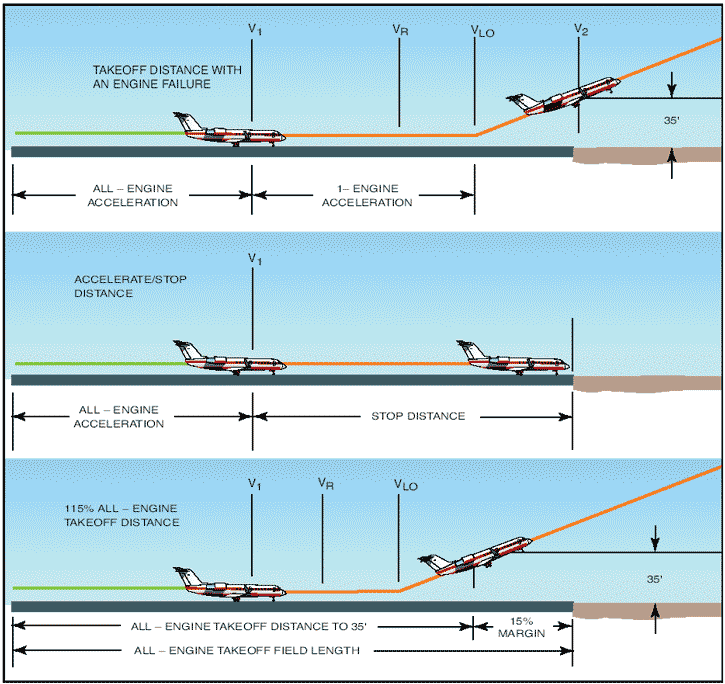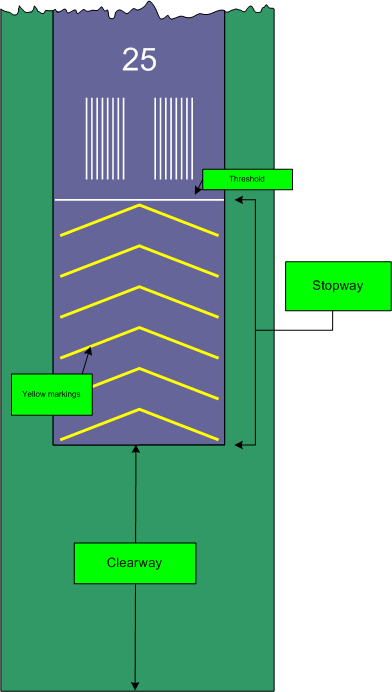Pilot
Guide to Takeoff Safety

The concept of Safety is very important in
Pilot Decision Making.
Pilot decision making often is a fundamental element
in accident causal chains, where a Pilot didn’t make the best Safety Decision
about flying or non-flying situation.
It is estimated that about ¾ all fatal General Aviation accidents
are attributed to Pilot performance.
Safety is an important part of all the work we
are doing both in the air or on the ground, for Safety is the prevention of
accidents or to reduce them.
Pilots must work all the time improve to achievement
more information in an effort to avoid an accident during takeoff or any phase
during flying.
I want to review and share this interesting
issue regarding some basic definitions to develop and explore always new ways
to avoid accidents and incidents in General Aviation.
Safety First, Zero Accident has been around for
a long time. It sounds respectable, but unfortunately, it never has been. Recognized
and corrected both if you think do not remember some of the concepts of the
variation of some basic operational considerations are shown in this article.
Expected Conclusion: Provide new decision aids
and educational training and develop the appropriate existing material.
The Rules:
Some basic FAA definitions may be useful
talking specific performance, also more detailed descriptions of FAA, ICAO requirements
can be found in the material attached to this article.
Takeoff must be based on a smooth, dry, hard
surface runway.
Takeoff Speeds :
VMCG (Ground): The
minimum calibrated airspeed at which the airplane is satisfactorily controllable
with the use of primary aerodynamic controls alone following the failure of the
critical engine. Maximum permitted lateral deviation from the runway centerline
is 25 feet. Use of nose wheel steering including rudder pedal steering is not
permitted in the determination of VMCG.
VMCA (AIR ) : The calibrated airspeed at which
, with all engines developing maximum thrust and when the critical engine is suddenly
made inoperative, it is possible to recover control of the airplane with that
engine still inoperative and maintain straight flight either with zero yaw or ,
at the option of the applicant, with the angle of bank of not more than 5
degrees. During the recovery , using a maximum rudder pedal force 180 lbs., the
airplane must not require any exceptional piloting skill, alertness or strength
to prevent a heading change of more than 20 degrees.
V1 Takeoff Decision Speed : As speed selected by the applicant
which must be at least the minimum calibrated airspeed at which controllability
is shown (during the takeoff run ) to be adequate to safely continue the
takeoff using normal piloting skill when the critical engine is suddenly made inoperative.
V1 may not be less than VMCG or greater then VR.
V2 Min Takeoff
Safety Speed : May
not be less than 1.2 Vs for turbojet powered airplanes without provisions for
obtaining a significant reduction in the one engine inoperative power- on
stalling speed.
May not be less than 1.10 VMC.
V2 Takeoff Safety
Speed : Must be
selected by the applicant to provide at least the required gradient of climb
but may not be less than V2 MIN or VR plus the speed gained before reaching a
height of 35 feet above the takeoff surface .
VMU Minimum Unstick
Speed : The
calibrated airspeed at and above which the airplane can safely lift off the
ground and continue the take off .
VR Rotation Speed :
May not be less
than V1 or 1.05 VMCA or the speed that allows reaching V2 before the airplane reaches
a height of 35 feet above the takeoff surface , or a speed that will result in
a VLOF not less than 10 percent above VMU if the airplane is rotated at its maximum
practicable rate with all engines operating (5 % with one engine inoperative).
VLOF Lift Off Speed
: Is the calibrated
airspeed at which the airplane first become airborne .
Speed Abuses :
It must be shown that the one engine inoperative
takeoff distance using a rotation of 5 Knots less than VR does not exceed the corresponding
one-engine –inoperative take off distance using the established.
Reasonable expected variations in service from
the established takeoff procedures for the operation of the airplane (such as over
rotation of the airplane or out of trim conditions) may not result in unsafe
flight characteristics or marked increases in the scheduled takeoff distances.
Distance :

Acellerated –Stop Distance
: The sum of
the distances necessary to Accelerate the airplane from a standing start to V1
and come to a full stop from the point at which V1 is reached assuming that the
critical engine fails at V1 . The accelerate-stop –distance may include a Stopway.

Stopway: An area beyond the takeoff runway no
less wide than the runway and centered or the extended centerline of the runway
, able to support the airplane during an aborted takeoff without causing structural damage to the
airplane , and designated by the airport authorities for use in decelerating
the airplane during an aborted takeoff .
Clearway: An area beyond the runway, not less
than 500 feet wide,centrally located about the extended centerline of the
runway, and under the control of the airport authorities. The clearway is not
expressed in terms of a clearway plane, extending from the end of the runway
with an upward slope not exceeding 1.25 percent, above which no object nor any terrain
protrudes. However, threshold lights may above the plane if their height above
the end of the runway is 26 inches or less and they are located to each side of
the runway. The takeoff distance must not exceed the length of the runway plus
the length of any clearway except that length of any clearway included must not
be greater than one half the length of the runway. Also one half the distance
from liftoff to the end of takeoff run must occur over the runway.


Takeoff Distance : The greater of the horizontal
distance along the takeoff path from the start of the takeoff to the point at
which the airplane is 35 feet above the takeoff surface considering an engine
failure at V1 or 115 percent of the horizontal distance along the takeoff path,
with all engines operating from the
start of the takeoff to the point at
which the airplane is 35 feet above the takeoff surface.
Takeoff Run : If the takeoff distance includes a
clearway, the takeoff run is the greater of the horizontal distance along the
takeoff path from the start of the takeoff point equidistant between the point
at which VLOF is reached and the point at which the airplane is 35 feet above
the takeoff surface considering an engine failure at V1 or 115 percent of the
horizontal distance along the takeoff path, with all engines operating, from
the start or the takeoff to a point equidistant between the point at VLOF is
reached and the point at which the airplane is 35 feet above the takeoff
surface.
Takeoff Path : The takeoff path extends from a
standing start point in the takeoff at which the airplane is 1500 feet above
the takeoff surface, or to a point at which the transition from the takeoff to
the enroute configuration is completed at an appropriate speed – whichever point
is higher .

The airplane must be accelerated on the ground
to V1 at which point the critical engine is made inoperative and remains
inoperative for the rest of the takeoff. The airplane must then be accelerated
to V2 during which time the nose gear may be raised off the ground at a speed
no less than VR.
The landing gear retraction cannot be begun until
airplane is airborne.
The slope of the airborne part of the takeoff
path must be positive. The airplane must reach V2 before it is 35 feet above
the takeoff surface and must continue at a speed as close as practical to, but
not less than, V2 until it is 400 feet above the takeoff surface.
http://www.faa.gov/other_visit/aviation_industry/airline_operators/training/media/takeoff_safety.pdf
Always Fly Safely !!!!
Took me time to read all the comments, but I really enjoyed the article. It proved to be Very helpful to me and I am sure to all the commenters here! It’s always nice when you can no t only be informed, but also entertained! how to become a pilot
ReplyDelete